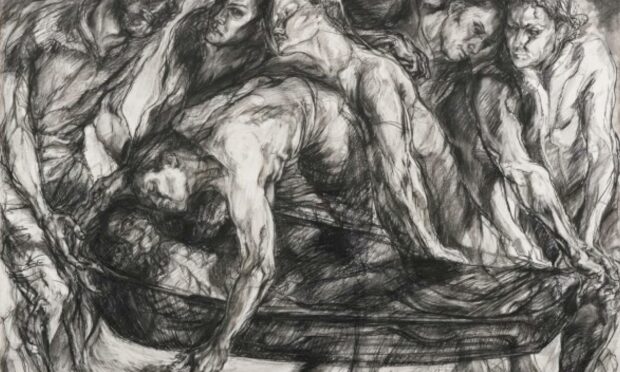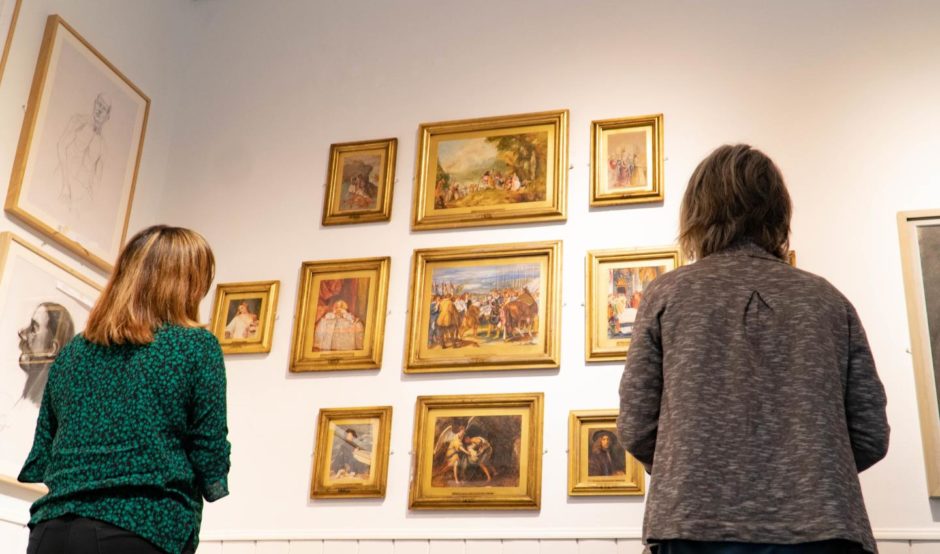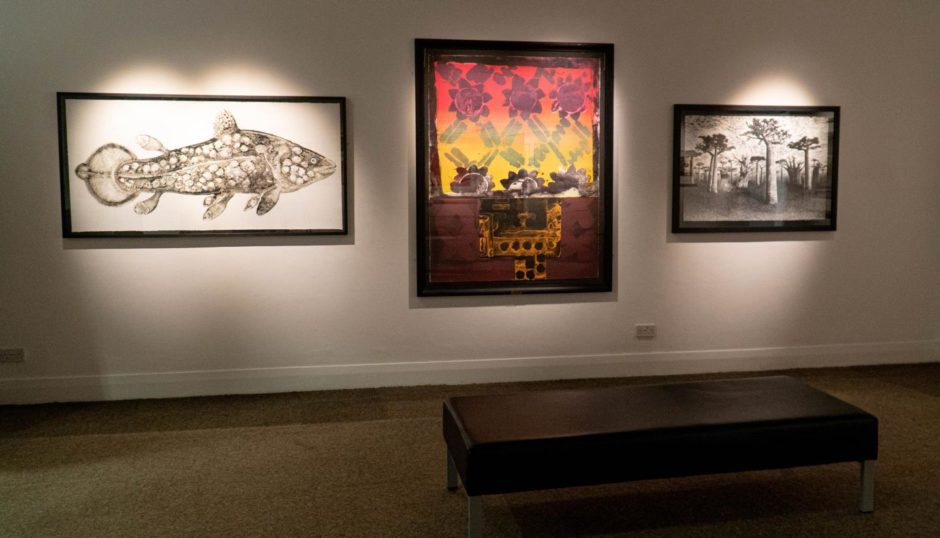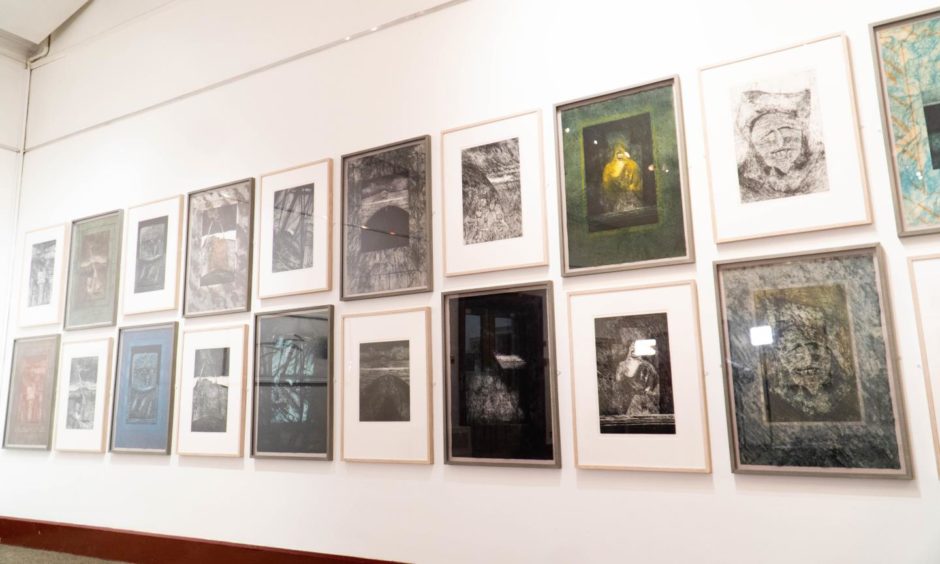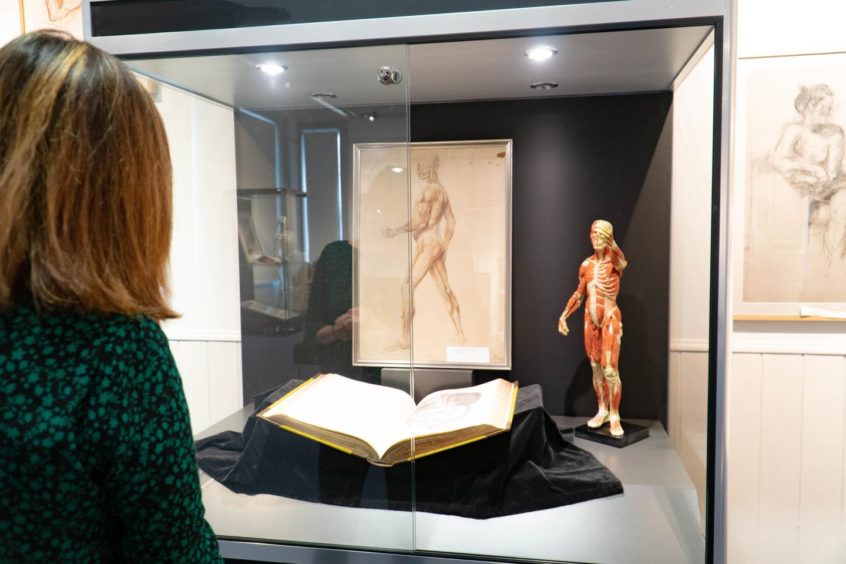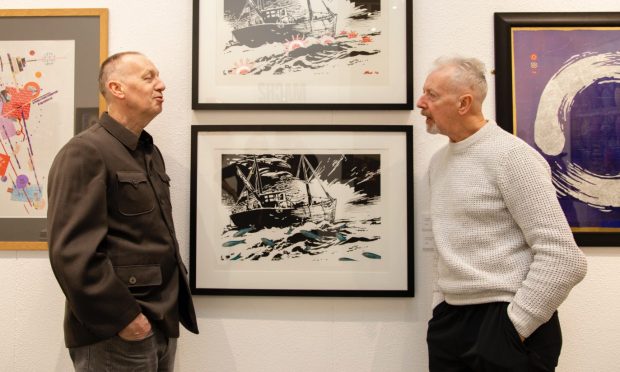Work from great artists of centuries past right up to recent offerings from contemporary creatives make up a newly-opened attraction in Angus.
The Royal Scottish Academy of Art and Architecture’s The Ages of Wonder started out as the largest collections exhibition ever staged by the national body when it was unveiled at The Mound in the heart of the capital back in late 2017.
A partnership between the RSA and the National Galleries of Scotland in collaboration with three of Scotland’s oldest universities — St Andrews, Edinburgh and Dundee — the landmark offering set out to chronicle the story of Scotland’s art across a near 500-year period, with new work being created by present day talents in front of the very eyes of visitors to the iconic building in the shadow of Edinburgh Castle.
Following successful pre-pandemic mountings of scaled-down versions of the original all-encompassing extravaganza in places like Paisley and Linlithgow, a last chance for people to see Ages of Wonder is now being offered in Angus, its most northerly destination to date.
For the attraction’s Courier Country grand finale, the Meffan Museum and Art Gallery in Forfar is playing host to the RSA’s take on the story of fine art printmaking in Scotland, The Art of Etching, while Montrose Museum is opening its doors to The Life School, an exploration of the nation’s longest established artist-run society as a teaching institution via its continuing focus on anatomical studies.
Both of the county museums have only just reopened in recent days following their enforced closure since spring last year following the start of the first lockdown.
Culture, sport and leisure trust Angusalive’s visual arts lead Gill Ross says the reaction to the RSA’s eagerly-awaited Angus debut has given staff a major boost following their return to the workplace.
“The Meffan had a queue of people waiting to get in on the Saturday it reopened, which was fantastic,” she tells me.
“Montrose was really busy as well. It’s just been so nice to welcome people back because it’s amazing how much you miss the visitors. Everything we do is for them.
“When the museums were all shut and we were all working from home it just felt really strange, so folk are delighted that we’ve reopened and the feedback has been really good.”
The Art of Etching
Originally scheduled for last summer at what would normally be the height of the sister venues’ visitor season, The Art of Etching trawls the RSA’s vast collections to cover the period from the 18th Century work of Alexander Runciman through masterpieces by Rembrandt, David Wilkie and Elizabeth Blackadder, right up to specially-commissioned prints by Delia Baillie, Kate Downie, Stuart Duffin, Paul Furneaux, Jessica Harrison, Marion Smith and Frances Walker.
Of particular local interest, possibly, is the inclusion of the 1931 line engraving on paper Gethsemane by Ian Fleming.
The Glasgow-born artist, who died in 1994 aged 88, was from 1948-54 the principal lecturer at Patrick Allen-Fraser Art College based at Arbroath’s Hospitalfield House — believed to be Britain’s first art college — and had previously worked at Glasgow School of Art.
The Life School
Meanwhile, The Life School’s Montrose outing features both anatomical firsts and old master copies alongside early figurative paintings by such legends as post-impressionist Samuel Peploe and his contemporary Robert Brough, who died tragically young following a train crash in 1905.
More recent responses by American-born artist Beth Fisher and studio arts lecturer George Donald are also on show, as well as life studies made by emerging artists Paul Brady, Pavel Isupov, Kane McLay, Louiza Nomikou, Gabrielle Seguin, Lana Svirejeva-Hopkins and Suzanne Taylor during a live life school staged during Ages of Wonder’s original Edinburgh run.
Comprising around 130 pieces by dozens of artists — including circa 80 at the Meffan — compared to the 2017/18 exhibition’s 450-plus works at the sprawling Mound, the Angus displays utilise the bijou twin venues’ gallery space to the full.
Not as difficult as you’d think
Perhaps surprisingly, however, Gill says pulling together such a major undertaking amid ongoing restrictions wasn’t as difficult as it might have seemed to outsiders, although already painstaking work inevitably became even more time-consuming.
“What usually happens when we do an external exhibition is we send the plans through for the galleries and someone comes through to get a feel for our space and how their exhibition might flow within it,” she explains.
“Because of lockdown, the curator Sandy Wood wasn’t able to visit until the pieces had arrived and we’d started to lay things out. The RSA are used to touring the exhibition so they’d sent us photos of what they wanted it to look like and of what the layout would be like.
“It wasn’t too hard, but of course due to the government guidelines we had to adapt to wearing PPE when we were handling the objects. When you’re carrying a painting you get someone to help on the other side of it, and you can’t socially distance unless the painting is two metres wide.
“We had to do lots of risk assessments and be really strict about keeping people safe, but the technicians are fantastic. They know all the nitty-gritty of hanging a painting and getting it just perfect.
“We had to give them extra health and safety training, which was all an additional layer of complexity on top of the usual procedures, but it didn’t make it hugely difficult.
“For us, it was a case of looking at the space and asking how we could tell the story of the history of etching and life drawing in Scotland. The limitations included some historical anatomy books that the RSA said needed to be in cases and paintings that had to be hung in a certain way, so we needed to think about both the practicalities, but also about how it all flows as well.
“It’s a flexible plan where you know what you want to display and how you want to display it, but changing it to fit with how the space can accommodate it. It was a case of us roughing it out before the RSA people came to have a look and make sure they were happy with it, then it was all signed off.”
Visiting the original Ages of Wonder instantly inspired Gill to bring it north, and she believes lessons can be learned from the RSA’s approach to how it preserves its treasures. “We’re so fortunate, because we’ve got a fantastic art collection of our own in Angus and we’ve got more pieces than we can have on display.
“The collection belongs to the people of Angus and I see it as my job to create space for them to engage with the art. The virus has given us an opportunity to rethink if we’re truly representing Angus through this art collection, because when we’re gone it’ll still be here.
“When I saw the RSA exhibition I wanted to see how they did it and how that can influence how we share our collections with the people of Angus. They couldn’t have everything on display, but they did their research and selected pieces and had really famous artists in life drawing teaching the next generation who were creating some really amazing pieces.
A nationally-important tour
- “So it shows that art collections are dynamic and evolving, while the RSA is also really keen to reach people. It used to be that many people found it hard to connect with museums, but the venues should be reaching the people not the other way round. We should we doing more to reach audiences.”
Hosting a nationally-important tour can only help to increase the pull of the county’s galleries, Gill hopes. “There’s a thriving creative community in Angus, with so many artists based in the area,” she adds.
“I wasn’t worried about museums closing permanently as a result of the pandemic, but there was always a yearning to come back better after lockdown. Art is for everybody and there’s no substitute for working with the collections and for being able to stand right there in front of a picture or a sculpture.
“We’ve had some of our regular visitors saying this is the best exhibition they’ve ever seen from us, which is really nice to hear. Hopefully people from the Highlands will also come down to have a look, and people on their staycations. I hope as many people get to see it as possible.” - The Ages of Wonder is on show every Tuesday to Saturday from 10am-3pm until January at Forfar and Montrose. It’s free to visit and no booking is required.
